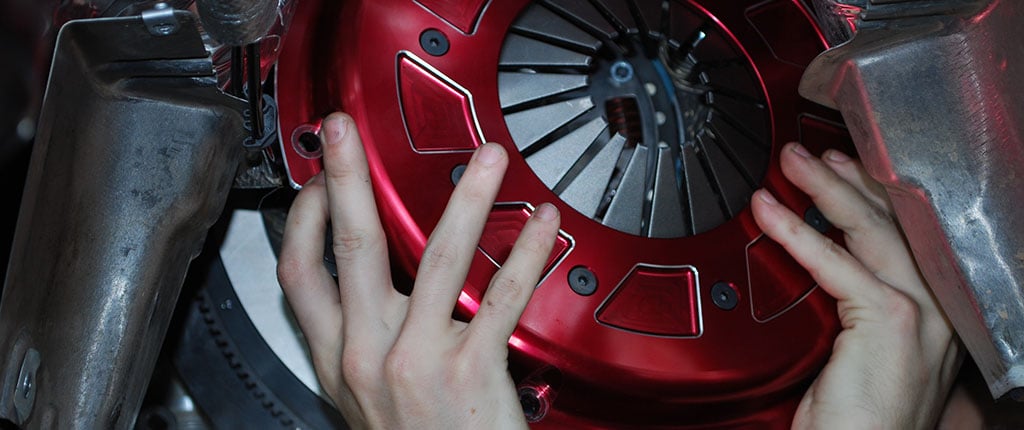If you ask 100 people about how to break in your new single disc or dual disc clutch, you will get about 99 different answers. We have heard some crazy ones over the years!
“Pull up against a solid object and slip the clutch until you smell it.”
“Take off in third gear a couple of times to get it good and hot.”
“Drive 20,000 miles.”
“Break in is not necessary, just let ‘er rip!” Ugh!
What is really important to know about breaking in your clutch?
The act of breaking in a clutch is really about seating the friction material of the disc, or discs, to the metal surfaces that they contact when the clutch is in the engaged position, and making full contact across these surfaces. We surface grind our friction surfaces on higher performance pressure plates and RAM flywheels to ensure that you have a perfectly flat mating surface for this to work properly. This surfacing is critical to proper break in – flywheels that have a machined or lathe turned finish are much harder to get an initial seat of the clutch disc against. Yes, there are performance clutch companies out there that skip this critical step.
Once you have those perfect surfaces, you can achieve the proper break in and seating. Think of breaking in your clutch much like you bed in a set of brakes – you want to achieve a couple of complete heating and cooling cycles to help set the fresh metal surfaces without overheating them, which can cause uneven seating, distortion, chatter, or warping of the pressure ring or floater plate on dual disc units.
How to Break In Your Clutch
To begin, take the car out on a ride around the neighborhood or local area. You want to have lots of engagements and disengagements as you drive to bring the engine and drivetrain completely up to temperature. Next take the car back home or to the shop and let it cool down completely. Repeat this cycle 1 to 2 more times.
At this point you should have decent contact with all the metal and facing components. Time to put some miles on the unit, driving in a fairly conservative manner for a couple of hundred miles with lots of shifting before you really pour the steam to your combination. Driving 100 miles down the highway to Aunt Nancy’s house and back is NOT what we mean here!
And finally a note about chassis dynos – this is the hardest load you can possibly submit your clutch system to. Do NOT take the car directly off the installation lift and onto the chassis dyno unless you plan to be replacing the clutch again soon. Complete the break in process first, or even consider making your tuning pulls with your old clutch system just in case there is a problem that subjects the clutch to an extreme torque load.
Taking care to properly break in your clutch system will ensure a longer life, smoother engagement, and better long term performance.

